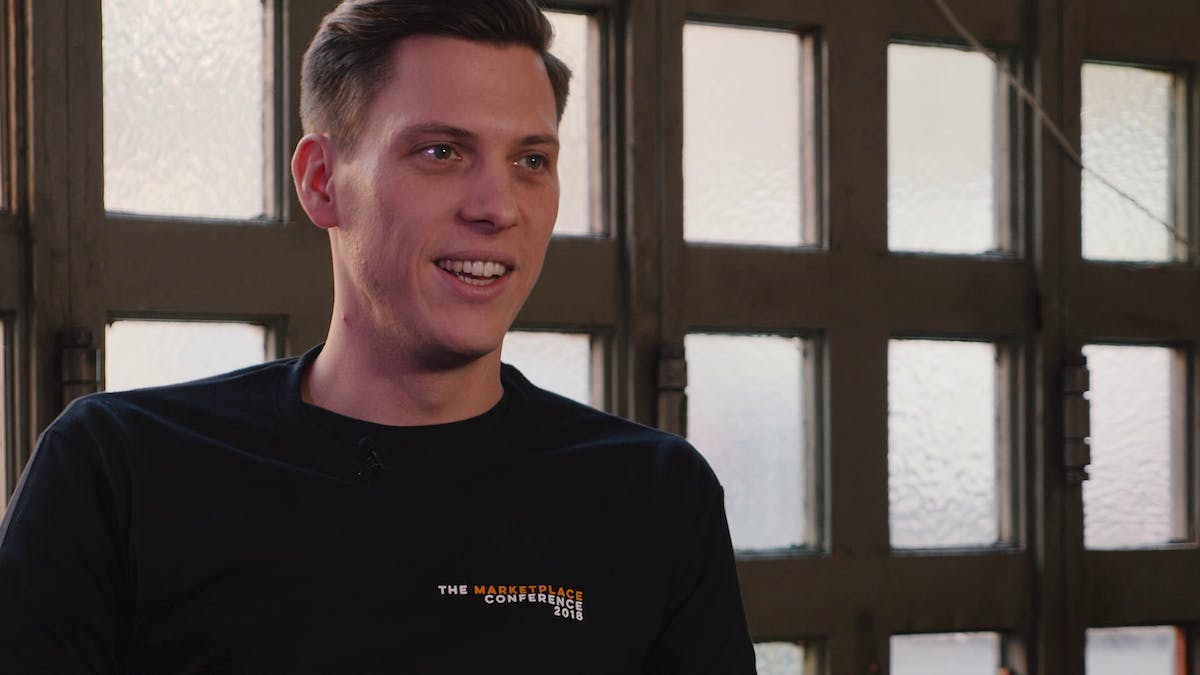Node saturation as a strategy for marketplaces
A guest post by José del Barrio from Samaipata Ventures on why saturating nodes is a good strategy for marketplaces.
Published on
Last updated on

This is a guest post by José del Barrio, founding partner at Samaipata Ventures, a founder's VC fund specialized in seed-stage marketplaces. For more tips on growing your business, check out the marketplace marketing and growth articles library.
“Big things often have small beginnings.” - T.E. Lawrence
When we talk about saturating nodes, we essentially refer to a strategy that enables marketplaces to obtain liquidity in an efficient manner. This strategy is based on ensuring that there are sufficient demand and supply side units for matches to happen as efficiently as possible within a certain segment.
That’s all great, but you’re probably still wondering: what’s a node? Well, what we call a node is essentially a set of supply or demand units—i.e. users, companies, etc.—that we can put under a sort of overarching umbrella of shared characteristics, sort of like a segment.
The size and, far more importantly, nature of a single node/segment is entirely up to the marketplace to decide. It can, for example, be defined by demographic, geographic, or socio-economic variables.
While a founder’s vision refers to the aspiration of solving a ‘big picture’ pain, saturating nodes refers to a go-to-market strategy based on solving small, proportionate pains to slowly achieve the long-term goal.
2 great examples that illustrate this point:
- When Uber started their operations, they were an exclusive on-demand chauffeur service for the upper class of San Francisco. However, this was merely a go-to-market strategy. After saturating that node, they moved to different segments of supply/demand, e.g. New York UberX (low-cost ride-sharing in NY).
- One of our portfolio companies, OnTruck, a Madrid-based freight delivery platform, started by focusing on regional, heavy-weight delivery in order to master the segment.
A great advantage of employing a node saturation strategy is that it allows you to identify whether or not your marketplace benefits from network effects—an exponential increase in value as more users use it—early on. If it does, it will enable you to really capitalize on them and take advantage of the network effects.
- In the case of Airbnb, if the platform only had a few hundred users, it would be virtually useless. However, as the user base and liquidity increases, the value and usage of the platform increase exponentially. Airbnb chose hosts in New York as its early node, which helped it identify its network effect potential more quickly.
Additionally, node saturation may help lead to viral growth as it’s more likely for this kind of growth to occur amongst a similar set of users. Viral growth is, simply put, an optimal form of organic growth; a strategy based on referrals/word-of-mouth. Viral growth follows what in the marketing field is known as the “k-factor formula”, where new users bring in more users through invitations.
- An example of a startup that achieved viral growth is Truecaller, who managed to grow from 2 million users to 20 million users in merely a year. The 18+ million new users were nearly all acquired through organic referrals. At launch, they focussed on tapping into the Blackberry’s App market, however, due to an astonishing market response, Truecaller swiftly expanded into numerous other operating systems.
In the context of marketplaces, liquidity refers to having a high probability of a transaction occurring for a given user. In other words, there needs to be enough relevant supply and demand on the platform. By focusing on a single node, it's easier to achieve liquidity within that node.
- In the case of Uber, they must ensure sufficient car availability in every area they serve in order for a customer to always find a ride. Similarly, there needs to be sufficient demand on the platform to provide work for the drivers. One of the most extreme examples is UberPOOL, where reaching liquidity is especially difficult due to the model being more on-demand, ubiquitous and route-driven (constant pick-up and drop-off).
- Another good example is La Nevera Roja, a Madrid-based food delivery platform. They started their operations by focusing on single postal codes within Madrid, recruiting restaurants, and acquiring customers within the area. Once they had decent activity (ensuring liquidity), they expanded to neighboring postal codes. La Nevera Roja wanted to ensure enough variety in restaurants; for them, 40 was the magic number of restaurants needed to serve a specific location in order to maximize conversion rate and lower customer acquisition costs.
After facing hundreds of passionate marketplace founders, we’ve noticed a common trend with struggling startups: they often spread themselves too thin from the outset. Ambition should always be complemented with focus and a sense of ‘groundedness’.
We’ve learned that it’s better to start with a smaller, concentrated user base of super-satisfied ‘fans’ rather than having a bigger, spread-out user base that you are unable to deliver an outstanding user experience to. Creating a “wow” experience tends to generate substantial organic growth. Think about it—in nearly all the industries with companies that have a marketplace business model, there exists a clear leading brand with a loyal, highly satisfied user base. This is an invaluable asset.
Community-building is about giving your users a sense of belonging, giving them a voice that’s valued; in fact, it's your community who will give the best feedback, which is especially useful in the early stages of a marketplace. If a startup were to commence operations with a spread-out user base, it would limit its flexibility to react to the feedback of its initial consumer demands.
Here are 2 examples of platforms that really focused on building communities:
- Facebook started by focusing just on Harvard University students rather than immediately opening up or promoting their site to the whole world. They knew that the platform is valuable only if there’s high user interaction, and creating an online community for the existing offline community for Harvard students was a good way to facilitate those interactions.
- One of our portfolio companies, 21Buttons, a Barcelona-based fashion-focused social network, focused their geographic node on Spain. They started with famous influencers, then passionate fashion addicts, and finally mainstream users. They then repeated the process in other regions such as Italy. Similarly to Facebook, 21Buttons needed to have high user interaction. Since Spanish users had relatively homogenous fashion tastes and followed many of the same influencers, it allowed them to connect with a nationwide fashion community.
You might also like...

Investor Carmen Alfonso Rico on what makes a marketplace defensible
Carmen Alfonso Rico’s strategies for building a marketplace that is defensible against competitors.

Online marketplace design: the 5 principles of a great marketplace UX
Five key online marketplace design principles and tons of practical tips and examples. Courtesy of marketplace UX designer Fiona Burns.

What do investors look for in marketplaces?
Mathias Ockenfels shares his love of network effects – and how he spots them early on.
Start your 14-day free trial
Create a marketplace today!
- Launch quickly, without coding
- Extend infinitely
- Scale to any size
No credit card required

